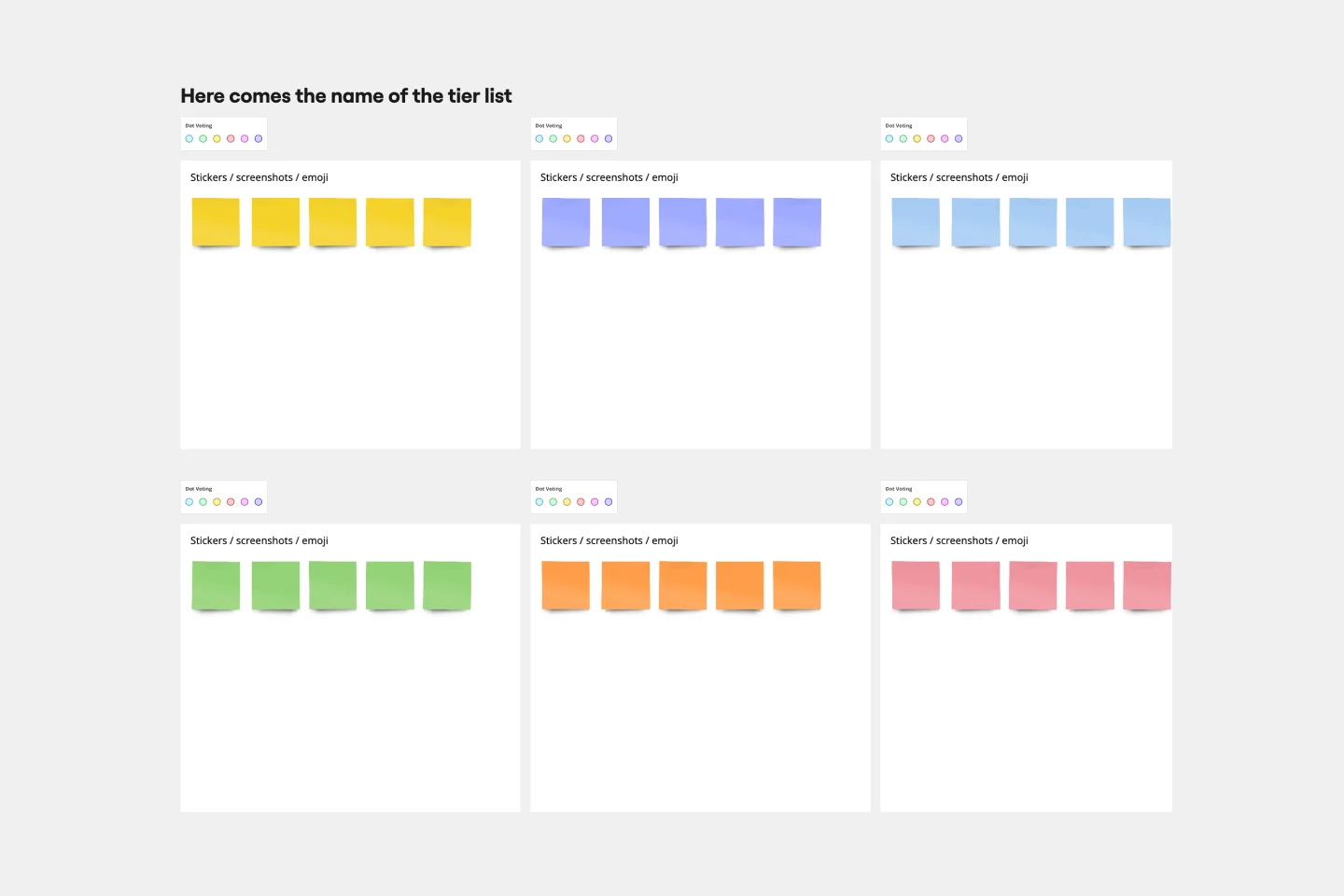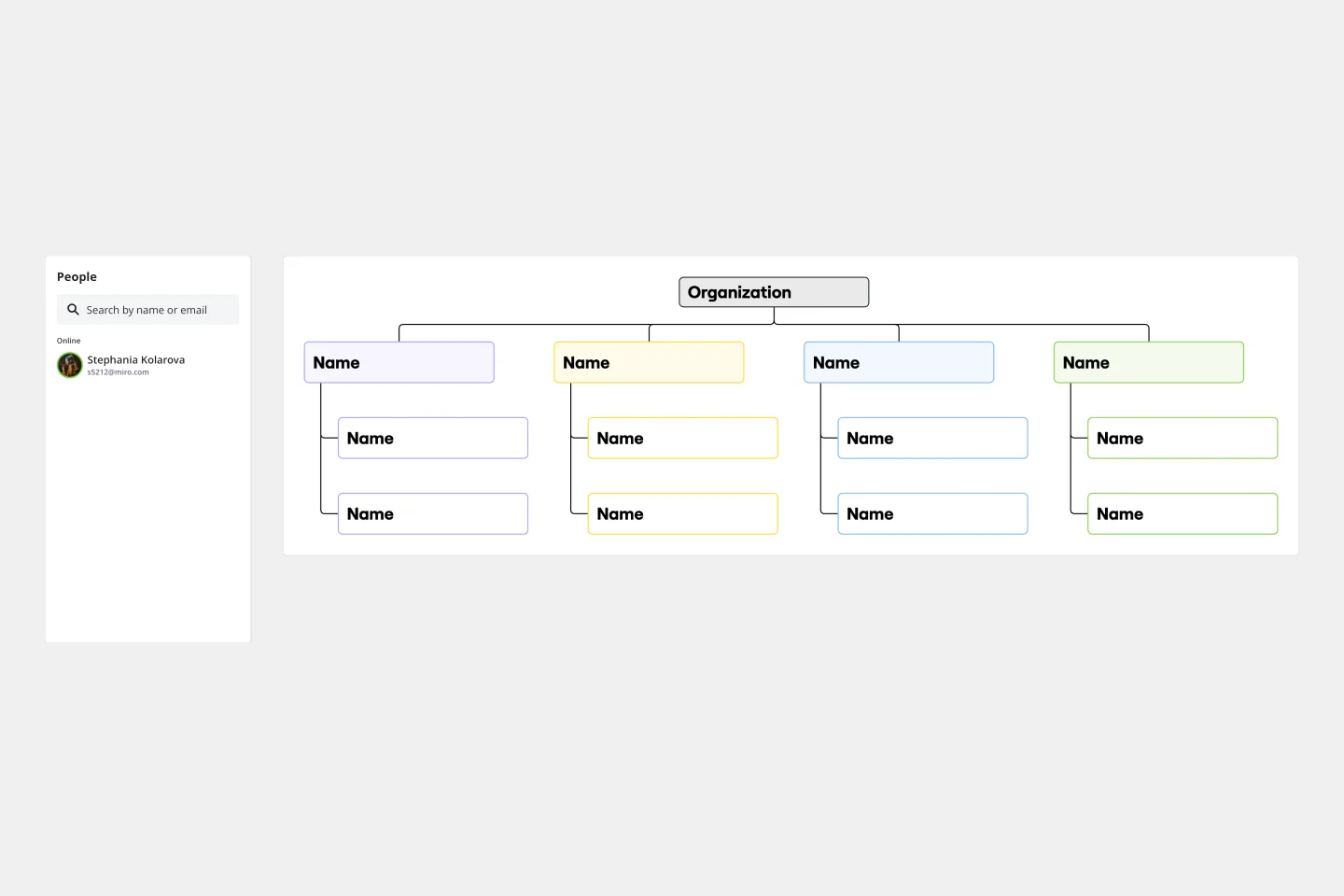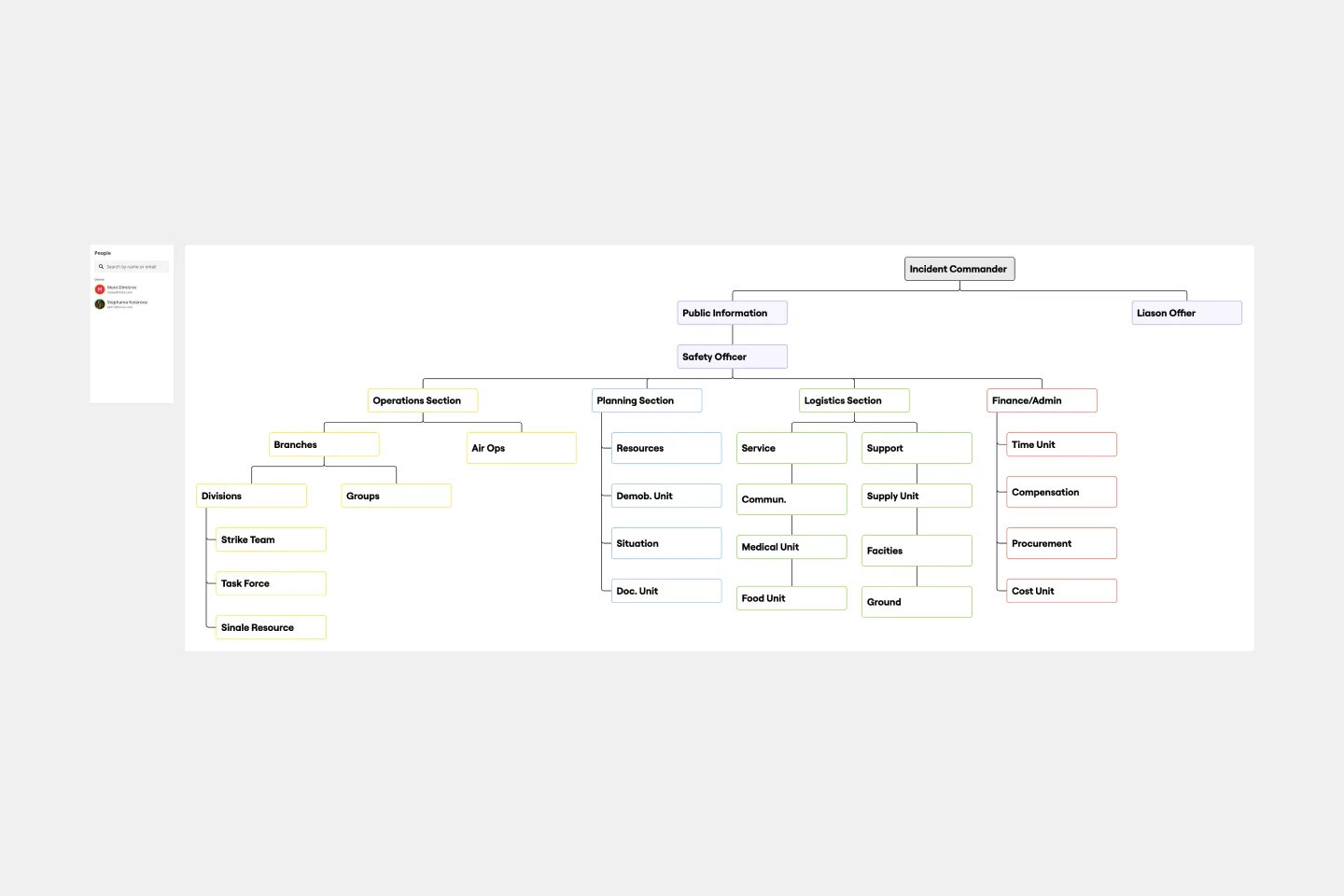About the Alignment Chart Template
To understand what an alignment chart does, it’s helpful to understand the concept of alignment. An alignment categorizes a person, thing, or idea along two dimensions: “lawful” versus “chaotic” and “good” versus “evil.” Combine these dimensions in a total of nine different alignments. For example, someone can embody “lawful good” or “chaotic evil.” An alignment chart situates these traits along a 3x3 or 5x5 grid.
Where is the Alignment Chart from
Alignment charts originated in the game Dungeons & Dragons. D&D creator Gary Gygax drew on fantasy stories by authors Michael Moorcock and Poul Anderson to create a fun, memorable system for categorizing players’ characters before playing a game. Characters could be lawful, meaning they respect and follow societal rules; chaotic, meaning they are rebellious and individualistic, or neutral, meaning they aren’t quite lawful or chaotic. Gygax later introduced the cross-cutting traits of “good” and “evil” to add nuance to these descriptors.
Over the past few years, alignment charts have moved beyond the realm of D&D and into classrooms, online quizzes, listicles, and conference rooms. They’re a popular feature on social media accounts for brands and individuals alike.
If you’re a social media manager, you can use an alignment chart as a fun exercise on your Instagram or other accounts, sorting your products, features, favorite movies, or more based on the alignment system.
You can also use an alignment chart template as a lighthearted way to kick off a brainstorm, or as an icebreaker before a meeting. Simply give everyone a topic, or invite your team to pick a topic and let your imagination run wild.
Create your own Alignment Chart
Making your own Alignment Chart is easy. Miro’s virtual collaboration platform is the perfect canvas to create and share them. Get started by selecting the Alignment Chart Template, then take the following steps to make one of your own.
Pick a topic. If there’s a book you like, you could align the characters or align several books in the same genre. If you have a line of products, you could align those too. The possibilities are endless! The only constraint is that you have to choose nine things to categorize. If you’re using the alignment chart to kick off a brainstorming session or as an icebreaker, get the whole team involved. Invite anyone to pick a topic.
Choose photos or images to represent each thing you’re categorizing. You can use emojis (as seen in our template), stickers, or actual images of the item you’re sorting into the chart. Get creative with it. If you plan on sharing the alignment chart on social media, don’t be afraid to dress it up with colorful fonts and graphics. You want your chart to stand out to inspire your followers to share widely.
Use the template to sort each thing. Add your images to the template to signify where something falls in the alignment chart. There are nine total possibilities: lawful good, chaotic good, neutral good, true neutral, lawful neutral, chaotic neutral, lawful evil, chaotic evil, and neutral evil.
Share your chart with your team. Once you’re finished sorting, you can share your alignment chart with your team! This is especially useful if you need to gather feedback from your teammates before posting it on social media.
FAQ about the Alignment Chart
How do I read an Alignment chart?
An Alignment chart is a useful tool for developing a character’s identity. An alignment chart categorizes a person, thing, or idea along two dimensions: “lawful” versus “chaotic” and “good” versus “evil.” It’s possible to combine these dimensions in a total of nine different alignments in the Alignment Chart’s 3x3 grid. For example, someone can embody “chaotic evil” or “lawful good.”
What are the 9 moral alignments?
The Alignment chart has 9 moral alignments in its 3x3 grid, which allow you to categorize characters according to their ethical and moral perspectives. These 9 moral alignments include Lawful Good, Neutral Good, Chaotic Good, Lawful Neutral, True Neutral, Chaotic Neutral, Lawful Evil, Neutral Evil, and Chaotic Evil. Using Miro’s Alignment Chart Template, you can categorize characters and share them with your team.

Miro
The AI Innovation Workspace
Miro brings teams and AI together to plan, co-create, and build the next big thing, faster. Miro empowers 100M+ users to flow from early discovery through final delivery on a shared, AI-first canvas. By embedding AI where teamwork happens, Miro breaks down silos, improves alignment, and accelerates innovation. With the canvas as the prompt, Miro’s AI capabilities keep teams in the flow of work, scale shifts in ways of working, and, ultimately, drive organization-wide transformation
Categories
Similar templates
Project Organizational Chart Template

Project Organizational Chart Template
When you’re embarking on a long, complex project, you will inevitably hit roadblocks and obstacles. It’s important to have your project organizational chart on hand to overcome those challenges. A project organizational chart is a visual diagram that illustrates who is on your team and the role they play in a given project. It documents the structure of the project organization, the hierarchy between team members, and the relationships between employees. Project organizational charts are useful tools for clarifying who does what, securing buy-in, and setting expectations for the group.
Tier List Template

Tier List Template
A Tier List Template is a ranking tool that allows teams to organize different items into specific categories, or "tiers," based on their significance, quality, or performance. This template is a visual tool that aids in making decisions and prioritizing tasks. Use it to power your brainstorming, strategic meetings, and planning.
Flat Org Chart Template

Flat Org Chart Template
The flat org chart template provides a clear and visual representation of modern organizational structures that prioritize collaboration and horizontal relationships over complex hierarchical chains of command. One of the major advantages of using this template is that it promotes clarity and transparency, making it easy for organizations to showcase team configurations and ensure that all team members understand their roles in the larger context. This clarity fosters a more inclusive and collaborative environment, which aligns perfectly with contemporary organizational values. The template is a great tool for promoting effective communication and teamwork.
ICS Org Chart Template

ICS Org Chart Template
Our carefully crafted ICS Org Chart Template is an invaluable tool designed to clearly represent the hierarchical structure of the Incident Command System (ICS). It simplifies the complex web of roles, responsibilities, and chains of command within the ICS, providing a structured blueprint for both experienced professionals and those new to the system. The template's most notable benefit is its ability to foster immediate understanding, bridging the gap between intricate organizational structures and the teams navigating them. Teams that use this template can ensure that everyone is aligned, understands their role, and collaborates efficiently, thereby reducing potential bottlenecks and misunderstandings.
Project Organizational Chart Template

Project Organizational Chart Template
When you’re embarking on a long, complex project, you will inevitably hit roadblocks and obstacles. It’s important to have your project organizational chart on hand to overcome those challenges. A project organizational chart is a visual diagram that illustrates who is on your team and the role they play in a given project. It documents the structure of the project organization, the hierarchy between team members, and the relationships between employees. Project organizational charts are useful tools for clarifying who does what, securing buy-in, and setting expectations for the group.
Tier List Template

Tier List Template
A Tier List Template is a ranking tool that allows teams to organize different items into specific categories, or "tiers," based on their significance, quality, or performance. This template is a visual tool that aids in making decisions and prioritizing tasks. Use it to power your brainstorming, strategic meetings, and planning.
Flat Org Chart Template

Flat Org Chart Template
The flat org chart template provides a clear and visual representation of modern organizational structures that prioritize collaboration and horizontal relationships over complex hierarchical chains of command. One of the major advantages of using this template is that it promotes clarity and transparency, making it easy for organizations to showcase team configurations and ensure that all team members understand their roles in the larger context. This clarity fosters a more inclusive and collaborative environment, which aligns perfectly with contemporary organizational values. The template is a great tool for promoting effective communication and teamwork.
ICS Org Chart Template

ICS Org Chart Template
Our carefully crafted ICS Org Chart Template is an invaluable tool designed to clearly represent the hierarchical structure of the Incident Command System (ICS). It simplifies the complex web of roles, responsibilities, and chains of command within the ICS, providing a structured blueprint for both experienced professionals and those new to the system. The template's most notable benefit is its ability to foster immediate understanding, bridging the gap between intricate organizational structures and the teams navigating them. Teams that use this template can ensure that everyone is aligned, understands their role, and collaborates efficiently, thereby reducing potential bottlenecks and misunderstandings.